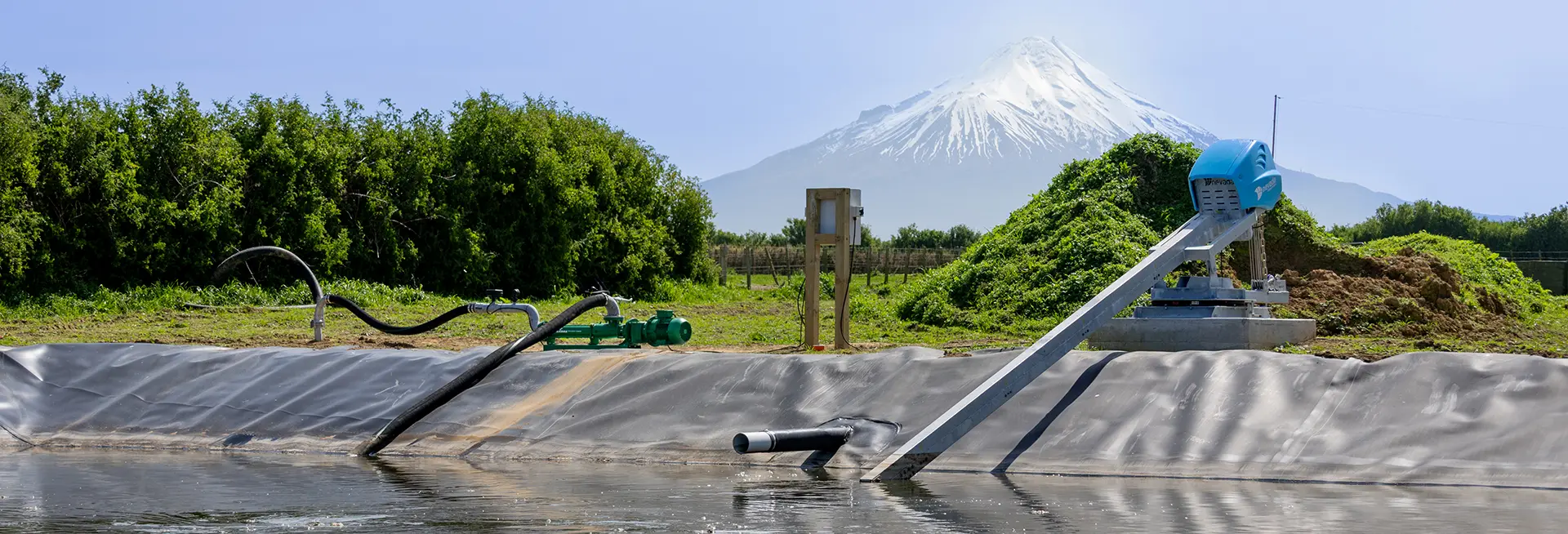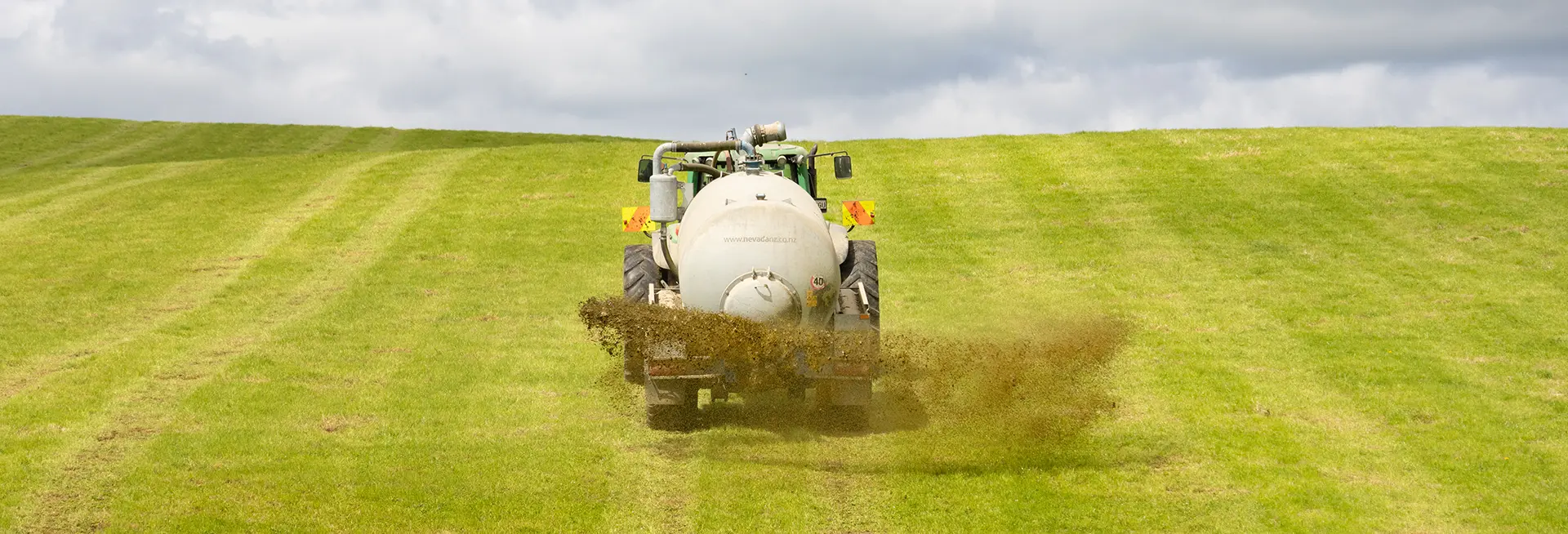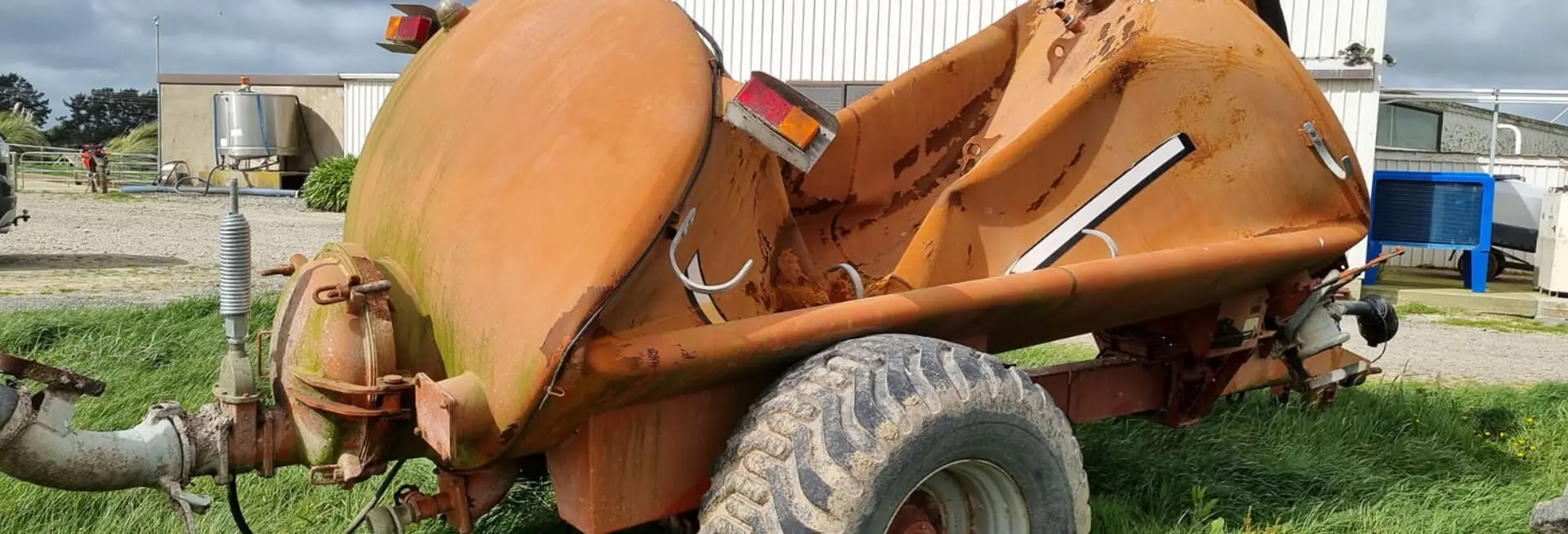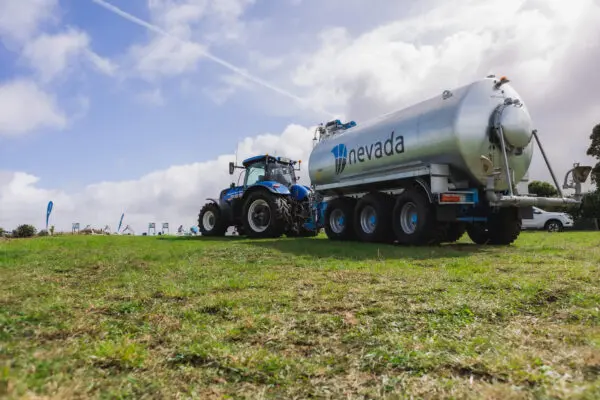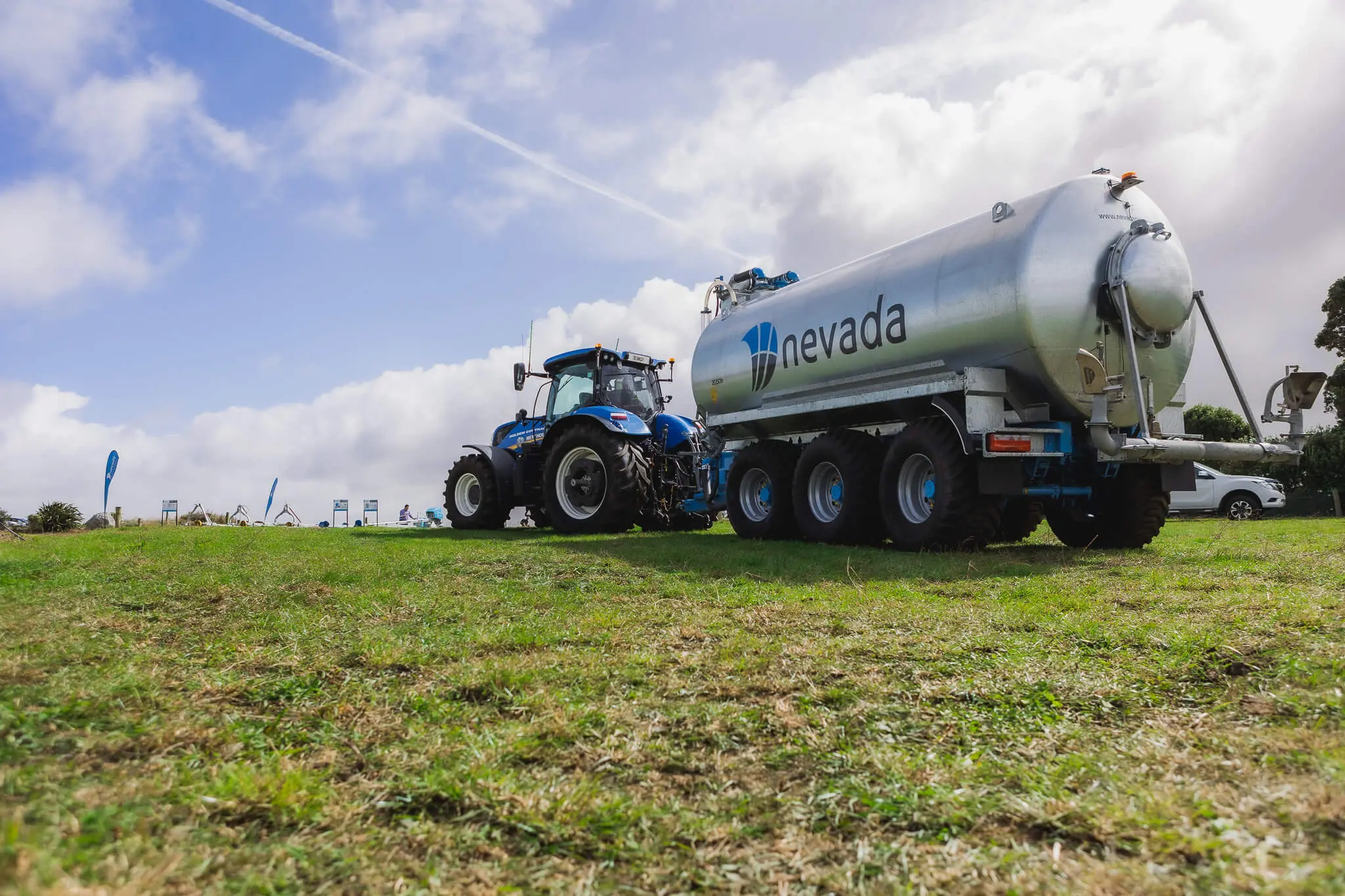Irrigators
An underground pumping system gives you the power of automation. Woohoo – reduced labour!
Not only is it great to automate tasks so you can get on with other tasks, but this is really handy during busy times like calving, or to be able to irrigate overnight when the sun’s not out.
The main downside to irrigators is they’re limited by the length of your pipeline and can only move in straight lines…which most sections are not. Additionally, there’s less control over the spread, with a higher chance of wind drift than a slurry tanker with RainWaveTM applicator – so they need to be kept at least 25 metres away from any waterways for compliance. Not to worry – this is where a slurry tanker comes in…
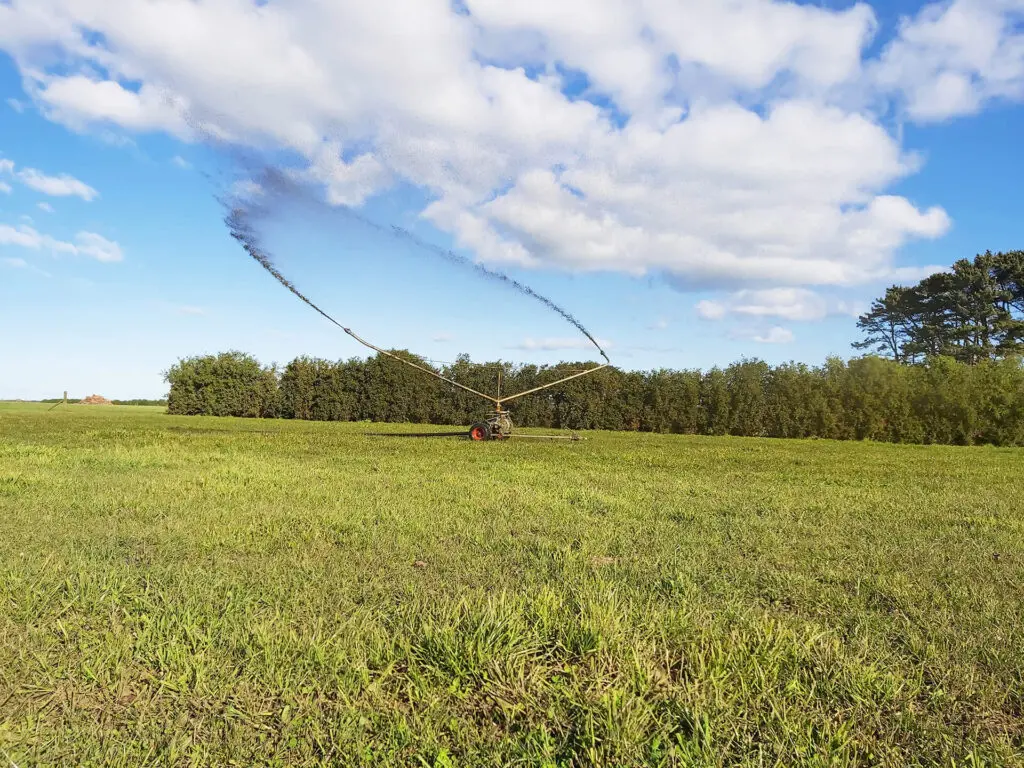
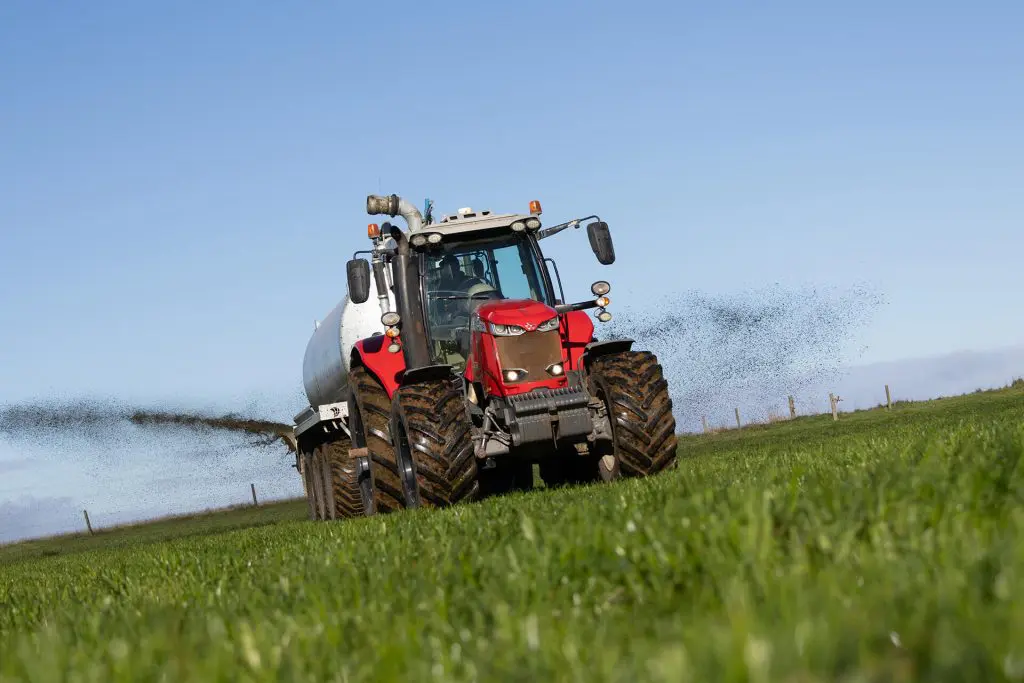
Slurry Tankers
Your slurry tanker can do what the irrigator can’t – making them a great pairing. With a slurry tanker you can take it anywhere, anytime, and depending on the applicator you may be able to get closer to waterways. Due to its control, many councils have approved use of a RainWave slurry tanker closer to waterways than what they would allow for an irrigator.
A slurry tanker can manage thicker slurries making it useful for feedpads, barns, stone traps, underpass sumps, as well as pig or poultry effluent. They can also be used to clean your trough!
Your annual pond empty is also made a lot quicker and easier with a slurry tanker – suck it up fast and spread all over the farm.
Slurry tankers are very low maintenance, and a good contingency should anything go wrong with the irrigation system. You can even make some money back by contracting out to neighbouring farms!
